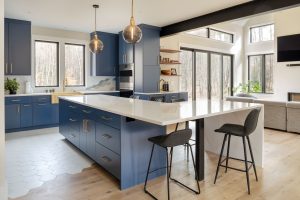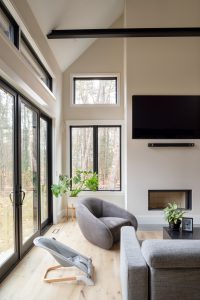Transforming a space into something beautiful and functional can feel overwhelming, especially if you’re unsure where to start. One of the biggest hurdles we face–and one that can lead to costly delays–is last-minute design changes. Here’s how we navigate the design process to minimize surprises and keep your project on track.
What Happens if Last-Minute Changes are Needed?
Last-minute changes happen, we get it! Perhaps the kitchen pendant lights arrived looking less glamorous than expected, or the selected paint color doesn’t do the bathroom vanity any justice and you want to repaint it. Or maybe during the renovation process, we discover that the home’s foundation is missing its footings and now we have to call in a structural engineer to assess the situation.
While we strive for perfection, adjustments are sometimes necessary. Our ultimate goal is to meet our client’s needs, as they will spend the most time in their homes, so it’s important that they love it. That’s why it’s essential to understand how even a small change can affect other elements of the project like the scope, budget, and timeline. That’s why effective communication and a deep understanding of our clients’ styles are vital throughout the design process.

How We Avoid Last-Minute Changes
- Setting a Clear Scope: During initial consultations, we ask targeted questions to understand our client’s needs, preferences, and budget. With this information, we define the project scope before diving into the preliminary design, which outlines goals, timelines, budgets, and phases of the project from start to completion. We also provide realistic cost estimates for services and construction, ensuring clients know what to expect.
- Creating 3D Models: To ensure our design meets both aesthetic and functional requirements, we utilize CAD to create 2D and 3D renderings. These detailed visualizations are reviewed and revised until they match our client’s vision, helping avoid misunderstandings. During this phase, we make sure to go over all aspects of the design thoroughly, including dimensions, materials, and spatial relationships. The more detailed our plans, the less likely we are to encounter surprises later on.
- Material Selections: Once the preliminary design is finalized, we move on to material selection. This phase involves sourcing materials that meet our clients’ aesthetic and functional needs while aligning with our architectural plans. To prevent last-minute changes, we order various samples, providing clients with a tangible sense of how materials will look and feel. We also collaborate with local suppliers like Ferguson in Portsmouth, NH to ensure material availability and lead times.
- Regular Check-ins: Effective communication is key! The design process is extensive and involves many professionals–builders, electricians, plumbers, structural engineers, and so on. That’s why we make sure to involve everyone early in the process and schedule regular check-ins to keep everyone aligned. Check-ins allow clients to provide feedback, address concerns, and allow us to find resolutions for any issues that may arise.
- Job Site Visits: Once construction begins, we make periodic visits to the job site to observe progress and discuss any concerns with the contractors or electricians on site. This helps us catch minor deviations before they escalate into larger, costlier issues. Plus, this allows us to give our clients real-time updates on where their project stands–which is especially helpful if they live out of state.
We are committed to making your design journey as seamless as possible, so by understanding the complexities of the design process and fostering clear communication, we can avoid costly last-minute changes! If you’re ready to start your dream home project, consider booking a free consultation with Amy, and together we can create a beautiful space that meets your needs and stays on schedule.

